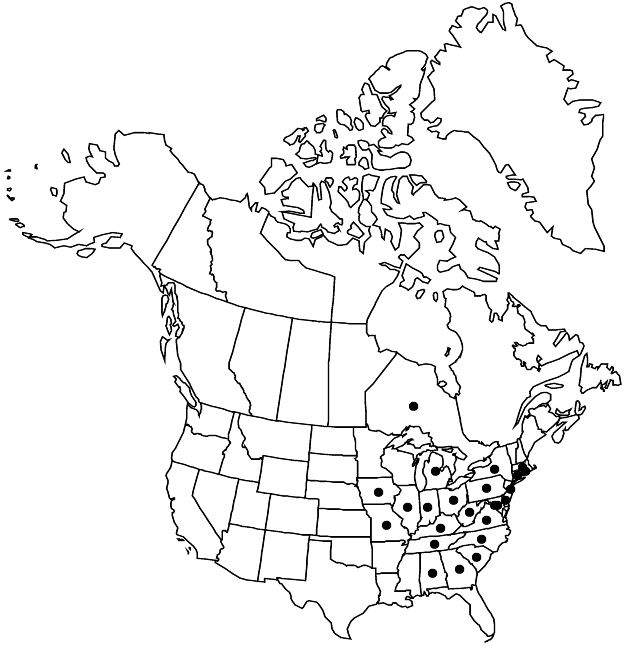Linum virginianum
Sp. Pl. 1: 279. 1753.
Herbs, perennial, 15–80 cm, glabrous. Stems erect, branches 1–several from base, unbranched proximal to inflorescence. Leaves: proximal 4–10 pairs opposite, distal alternate, erect to spreading; stipular glands absent; blade of proximal leaves spatulate, central and distal elliptic, oblanceolate, or obovate, 15–25 × 3–7 mm, margins entire, not ciliate, apex acute to apiculate. Inflorescences corymbs. Pedicels 1–10 mm. Flowers: sepals persistent, lanceolate-ovate, inner shorter, broader, thinner than outer, outer sepals 2–4 mm, margins not scarious, inner sepals usually with a few small, sessile glands along margin distal to middle, rarely eglandular, outer ones entire, apex acute to acuminate; petals yellow, obovate (sometimes notched at apex), 3–5.5 mm; stamens 1.2–3 mm; anthers 0.5–1 mm; staminodia absent; styles distinct, 1–2 mm; stigmas capitate. Capsules globose, carpels flattened or ± concave abaxially, 1.3–1.8 × 2–2.5 mm, apex depressed, dehiscing freely into 10, 1-seeded segments, segments falling freely, false septa nearly complete, proximal margins usually sparsely and inconspicuously few-ciliate. Seeds 1–1.5 × 0.6–0.9 mm. 2n = 36.
Phenology: Flowering Jun–Oct.
Habitat: Open woods, fields, thickets, roadsides.
Elevation: 0–800 m.
Distribution

Ont., Ala., Conn., Del., D.C., Ga., Ill., Ind., Iowa, Ky., Md., Mass., Mich., Mo., N.J., N.Y., N.C., Ohio, Pa., R.I., S.C., Tenn., Va., W.Va.
Discussion
Linum virginianum lacks prominent marginal teeth on the inner sepals, thus distinguishing it from L. striatum. It has a less elongate inflorescence and lacks the ribbed branchlets found in L. striatum (C. M. Rogers 1984). The corollas of L. virginianum are nearly rotate; all parts of the flower are yellow except the brownish anthers. Its capsules shatter readily and often are absent on herbarium sheets.
Selected References
None.
Lower Taxa
"thinner" is not a number. "broader" is not a number."wider" is not a number.